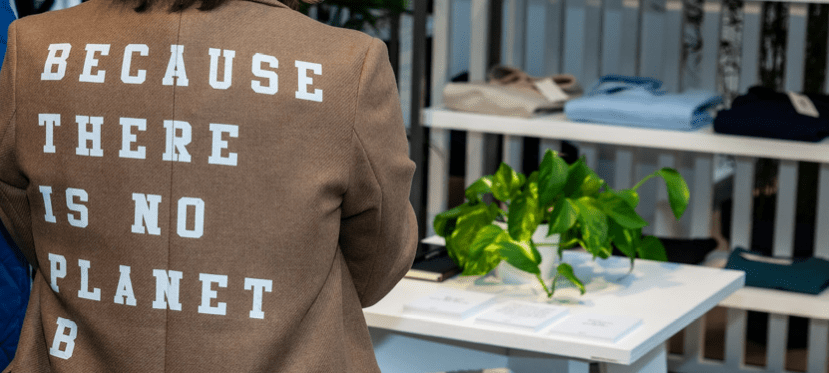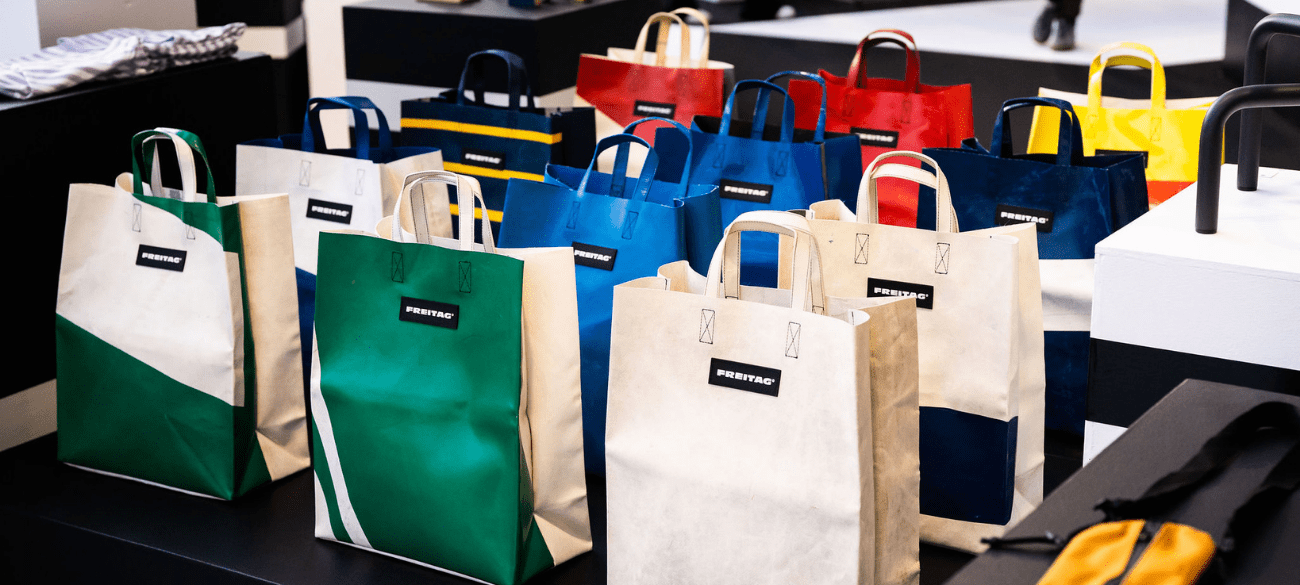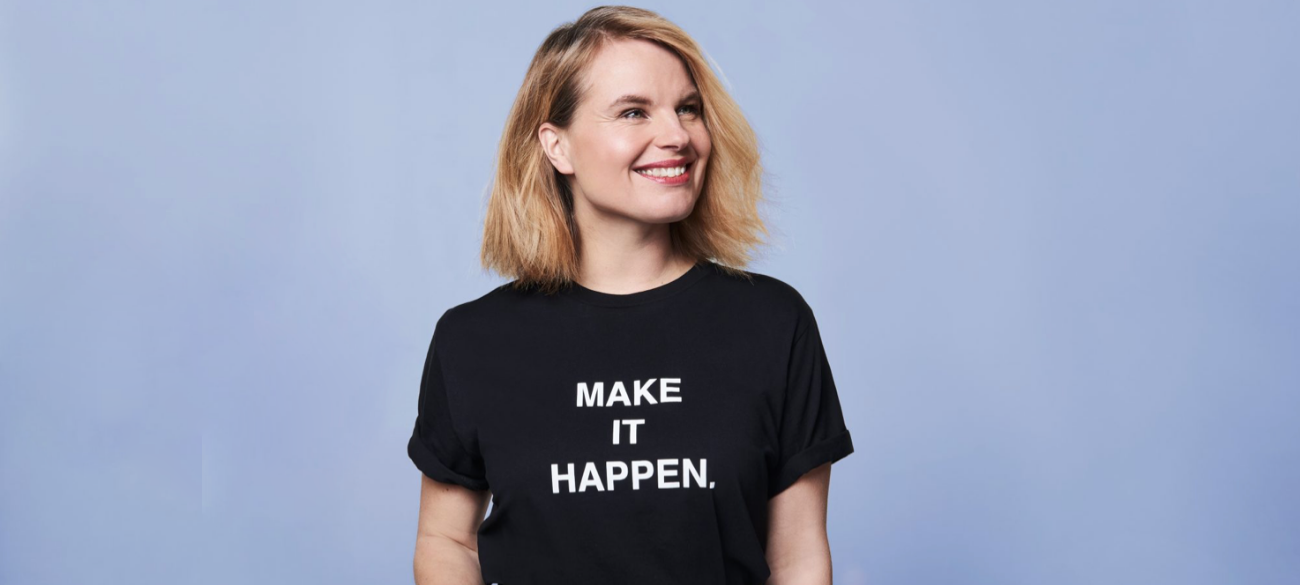Create a free retailer account now or view the other options.
Sustainability sells: the ins and outs of sustainable fashion buying for retailers
Simply offering a good product is no longer enough to satisfy modern-day consumers. Today’s consumers are after more than quality alone, they are looking for stores and brands that align with their own environmentally-conscious convictions. How can brands become more sustainable, and what are viable strategies for retailers planning to move towards ‘green purchasing’? Modefabriek catches up with Marieke Eyskoot, expert, speaker and consultant in the field of sustainable fashion and lifestyle, co-organiser of sustainable platform MINT at Modefabriek for 11 editions, ánd author of the book ‘This is a Good Guide - for a Sustainable Lifestyle’, to discuss the essential elements of developing a new and sustainable strategy.
Defining sustainable fashion
The terms ‘sustainable’ and ‘fashion’ do not appear to be natural bedfellows. Fashion is dominated by trends, and we are therefore urged to buy new clothes every season. But with a view to improved sustainability, we should actually be making more conscious choices regarding what we buy. In order to figure out how to take a more sustainable approach, we first need to define sustainable fashion. Marieke Eyskoot: ‘It’s fashion that is produced with respect for people and the world around us. Whether you focus on raw materials, energy usage, or labour rights and transparency; it’s all part of sustainable fashion’.

Sustainable purchasing is the future
For retailers, there’s never been a better time to embrace sustainability. Now that consumers are more critical and environmentally-conscious than ever before, sustainability is playing an increasingly significant role in the fashion industry. The current and new generations of consumers, headed by millennials and Gen Z, easily access information on sustainability and are much more aware of the somewhat shadier aspects of the fashion industry.
As a result, they also expect brands and stores to raise their sustainability game. A report by Forbes reveals that online searches for ‘sustainable fashion’ tripled between 2016 and 2019. Embracing sustainability as a fundamental aspect of your company can be a challenge, but it also offers perspective. Marieke Eyskoot argues that there is actually only one option for the long-term: ‘if you want to have a future as a brand or store in this industry, you need to keep up with developments. There is a limit to how much exploitation people and the planet can take. There comes a time when there’s simply nothing left’.
Communication is key; forget perfection
It can be difficult for a brand or store to take on the major challenge of becoming more sustainable. It sometimes seems like everything needs to be perfect in one go, but it’s mostly about clear communication. Marieke embraces this sentiment: ‘It’s essential that brands and stores are not hindered by the idea that you immediately need to tick all of the boxes when it comes to sustainability. It is important to be honest about what you are already doing, and particularly about what you are not, and why. Society itself is also not yet completely geared to 100% sustainability. But you can always by credible: make sure you can back up your claims’.
Quality, not quantity in the long term
Stores and buyers influence what actually makes it to the market, and where the industry is headed. You gain this influence by asking more questions, and by doing your own research, so that you have the facts. Marieke: ‘Look further than just price and style when deciding what to buy – sustainability criteria are just as important. What materials are used to make the items, and what are the working conditions like? Is there an independent organisation to verify this information?’
‘One of the most important steps is arguably the greater focus on quality instead of quantity. This means adjusting your company’s strategy. Move away from short-term turnover from small margins, which the current industry – based on quick, large volumes – maintains. Take a long-term approach, with more timeless and seasonless items. The collections can then also change less often, which in turn reduces the risk of overstock and sales in your store’.

Who pays the price?
People often think that it’s much more expensive for fashion companies to walk the path more sustainable. ‘It’s true that sustainable fashion is more expensive. And that’s a good thing: sustainable clothing isn’t too expensive, standard clothing is too cheap’, argues Marieke. ‘The fact that something is cheap doesn’t mean that it doesn’t cost much, rather that someone else other than you pays the price. But just like with standard clothing, there are various price segments within sustainable fashion, and it doesn’t always have to break the bank’. Brands and stores can be transparent and explain why things cost what they do. And that won’t necessarily put people off: research conducted by the Hult International Business School concludes that consumers are prepared to pay more for products by a sustainable brand.
Concrete legislation for upholding sustainability standards in the fashion industry is yet to be introduced, so retailers are free to decide whether to get on board, or not. ‘So now is the time for stores to stand out from the competition by making sustainable choices. Be proud of running an alternative business, as it really is the future’.
More info? Check Marieke’s Insta or learn more about her book 'This is a Good Guide - for a Sustainable Lifestyle'.
Written by Lara Oliveri.
Share article

